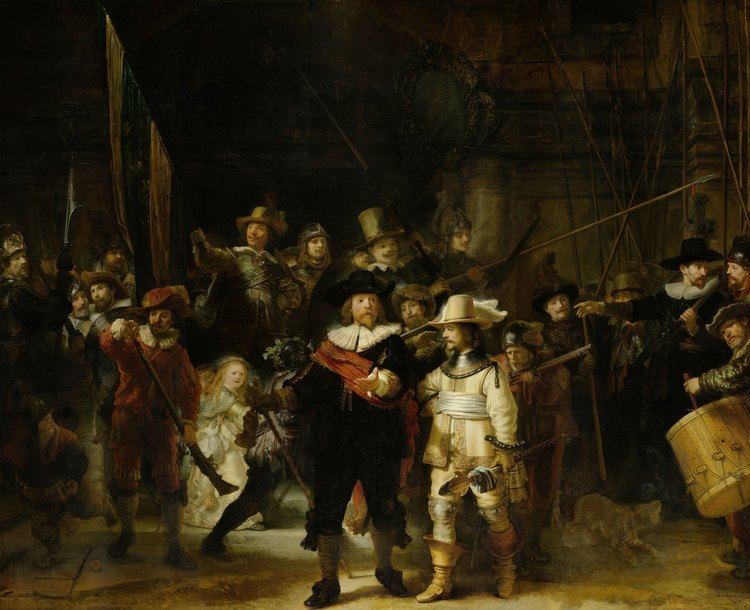Name Frans Cocq | Parents Cornelis de Graeff Role Political figure | |
 | ||
Similar People | ||
Great-grandparents Diederik Jansz. Graeff Grandparents Jacob Dircksz de Graeff | ||
Frank sanders ontvangt de frans banninck cocq penning
Frans Banninck Cocq (sometimes incorrectly spelled as Banning) (1605–1655) was a burgemeester (mayor) of Amsterdam in the mid-17th century. He is best known as the central figure in Rembrandt's masterpiece The Night Watch.
Contents

Rembrandt, The Night Watch
Biography
Frans was the son of Jan Jansz Cock, a local pharmacist in the Warmoesstraat and Lysbeth Frans (Banninck). He was baptized on 27 February 1605 in the nearby Old Church. As his parents were not married, it caused a scandal, but on 17 September of the same year they went to the townhall to notice the marriage. Both were related to Cornelis Hooft. Frans, who seems to have had one deaf brother studied law in Poitiers and Bourges between 1625 and 1627. He became captain of the militia after returning to Amsterdam. In 1630 he married Maria Overlander van Purmerland, the only surviving child of Volkert Overlander, merchant and one of the founders of the Dutch East Trading Company, and a few times burgemeester of Amsterdam. When his father-in-law died, Banninck Cocq inherited his properties, including a canal house, the castle of Ilpenstein north of Amsterdam along with the title Lord of Purmerland and Ilpendam. Banninck Cocq decorated the main hall with portraits of his wife's ancestors. The couple had no children.
Around 1630 Banninck Cocq (schepen) succeeded his father-in-law as a member of the city councel. In 1651 he was appointed burgemeester of Amsterdam. He was an advisor to his brothers-in-law Cornelis and Andries de Graeff. In 1653 he was re-elected.
Banninck Cocq is known today primarily for a painting commissioned in 1638 from Rembrandt van Rijn which shows Cocq and his company of civil guards. Although known as The Night Watch (1642), this is not the original title; at that time it was in fact unusual to title paintings but if indeed it had a name, the more correct one would be "The Company of Captain Frans Banning Cocq and Lieutenant Willem van Ruytenburch". The painting is notable, among other things, for its huge size: approximately 3.35 m x 4.26 m (11 ft by 14 ft).
Banninck Cocq also figures in the Bartholomeus van der Helst portrait of The Governors of the Longbow Civic Guards, 1653, now in the Amsterdam Museum.
"Banningh Cock" was buried on 6 January 1655; his tomb chapel is located in the Oude Kerk.
